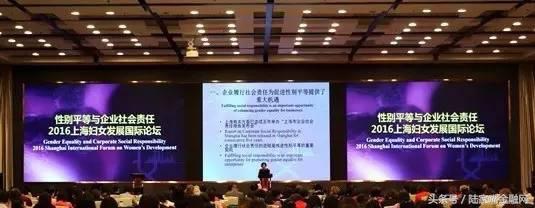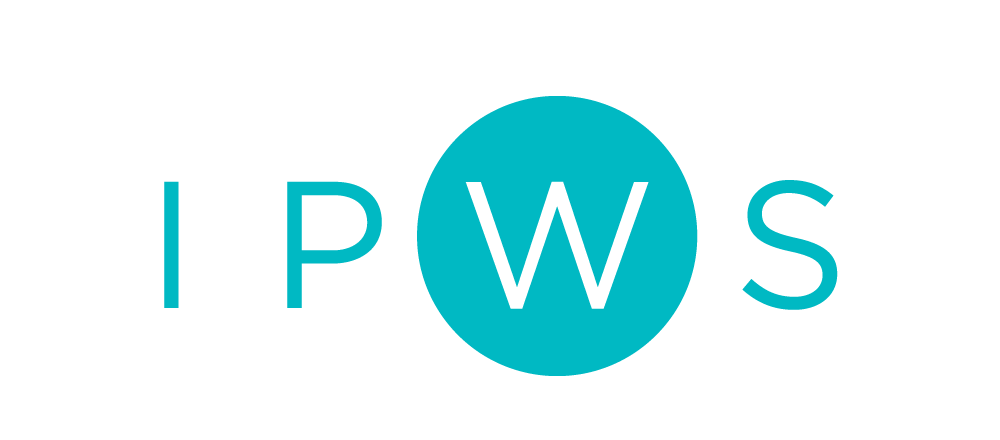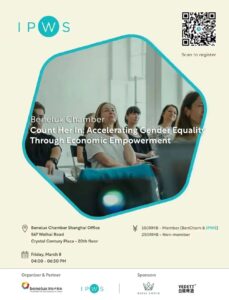
In October, IPWS President Tiziana Figliolia was invited to speak on her experiences working with our international professional women’s community at the 2016 Shanghai Women’s Federation Conference. She spoke on the topic of women empowerment and invited the audience to consider a new approach about gender equality in the workplace, and what corporations need when taking action. Attending the conference, more than 300 scholars, artists, entrepreneurs, chiefs of international organizations and non-governmental organizations participated in the forum, focusing on gender equality and corporate social responsibility (CSR).
As IPWS is one of Shanghai’s longest running international organisations, it serves as a purposeful community of professional women, that creates an environment for people to connect, regardless of language, nationality, age, and professional background. Working on the IPWS Board of Directors for 5 years, Tiziana spoke about gender equality, and the intersection between corporate and social in pursuit of that.
You can find the forum covered here on the Women in China website and the following is an excerpt of her presentation:
With all the talk in the last couple of years about Women Empowerment and Gender Equality, why has the needle not moved?
People and their talents are among the core drivers of sustainable, long-term economic growth. If half of these talents are underdeveloped or under utilized, growth and sustainability will be compromised. A simulation assuming that women are completely excluded from the labor force found that this would lead to income per capita losses of almost 40%. For example, the Managing Director of the International Monetary Fund has said, “excluding women simply makes no economic sense – and including women can be a tremendous boost to the 21st century global economy”.
Moreover, there is a compelling and fundamental values case for empowering women and achieve parity: women represent one half of the global population—they deserve equal access to health, education, earning power and representation. According to a research done by Manpower, our Global Leaders say gender equality – the time it will take for there to be an equal amount of women in leadership roles – is at least a generation away. Realistically, an average of 17 years for all those interviewed.
Females around the world are more glass half-empty than males, with millennial females being most pessimistic. They anticipate 22 years, and their male millennial counterparts are close behind.
“Awareness” and “Dialogue” are a good starting point, but they are not enough. We know what the issue is. We understand the impact. How do we accelerate the solution? Research shows we CAN change the environment in which we live, learn and work. But how?
To look for a solution on how to execute this change, perhaps we can borrow a theory from the field of behavioural economics and adopt a “behavioural designer” approach to look for the solution. Much like interior designers or landscape architects, behavioural designers create environments to help us better achieve our goals.
In 1970, only 5 percent of musicians performing in the top five orchestras in the United States were women. Today women compose more than 35% of top orchestras, yet this did not happen by chance. It was by design that some orchestra companies, starting from the Boston Symphony, introduced the concept of auditioning behind a screen. Biases were removed by “design” with the results of increasing the likelihood that a female musician would advance by 50% and getting hired. A simple curtain transformed what orchestra look like and doubled the talent pool.
Through behavioural design we can move the needle. But, women cannot do it alone.
We believe that corporations are responsible not only for their shareholders but also for a variety of stakeholders including the society at large. Through the intentional adoption of CSRs frameworks, including gender equality programs, Corporations play a key role in building solutions by design. There are some tools and techniques, often low hanging fruit.
Think about “new design” for Talent Management through the use of evidence, experimentation, improve data collection by gender and the use of big data. The latter translating into the recent areas of “people analytics” to replace intuition, informal networks, rule of thumbs with quantifiable data and rigorous analysis as a first step to overcoming gender bias. Increasingly more companies, like PTC, Credit Suisse, Goldman Sachs, LinkedIn, Microsoft, Google run their HR departments, like they run Marketing or Finance, based on evidence.
Companies also can take a fresh look at the message they send to people considering to join the organization. Are there gender biases on how jobs are advertised? Self-stereotypes regarding aptitude for certain subjects, disciplines or jobs could shape the signal sent and hinder their ability to attract the entire pool of talent. It’s something about being personally conscious when hiring for certain positions. For example, watching for the stereotypes that men are better at math and thus more adept to certain roles.
Corporations should create a de-biased environment in which people work. The list here is wide. From paying attention to role models that are often displayed or elevated to providing comfortable environment for re-tuning mothers that are still nursing.
Many companies are now sponsoring employees grassroots efforts through the establishment of formal “Employee Resource Group” programs. Generally speaking, ERGs are self-organized groups of employees that share a common interest. You may see some groups being a “Women” resource groups where women for example gather around certain activities, elevate and give visibility to role models, and discuss gender related topics in a safe environment. Leading a group like this at PTC, I often find so many issues and ideas are brought to light in this environment that otherwise would remain silent.
You can see from these examples how behavioural design applied to Gender Equality in the context of a CSR framework should span across multiple areas, hiring, promotions, environment, policy and decision making. Big data improves our understanding of what is broken and needs to be fixed, blind procedures help companies hire the best talent and not just those who looks the part, the role models shape what people think is possible. Most importantly is the small changes that can have surprising effects.

Social Networks are complimentary to CSR, and one of the social networks available in Shanghai for professional women is IPWS. For the past four years I had the pleasure of serving in the leadership committee of this purposeful community of women, creates an environment People to Connect, regardless of language, nationality – more than 40 nationalities are represented -, age, and professional background.
We believe that once connections are established we are solidary; we embrace more diversity and fear is minimized. We are more prone to get out of our comfort zone; so we exchange ideas and we build personal and reputational power (e.g. good power is equal to giving strength to action).
One of the good programs we launched through IPWS is called Mentor Walks, and this is designed to bridge the gender promotion gap through Mentoring. Mentor programs are often hard to organize and successfully maintain. The Mentor Walks program is designed differently than traditional one. It’s simpler in its form but has proven to be more successful than previously attempted traditional models.
Once a month, on a Friday morning from 7:30 to 9 in the morning, Mentor Walks brings together established women leaders and emerging women leaders in our community for a morning walk in the park to discuss professional and personal successes, challenges and aspirations. Mentees have the incredible opportunity to seek advice from seasoned professionals who will provide an open ear, honest feedback and meaningful guidance.
Mentorship and Networking initiatives are proven to be very effective ways of building leadership capacity. I see my involvement and contribution here, and those of others, as one of those small changes that will comprehensively lead us in the right direction.
Well designed – with trial and errors – corporate social responsibility frameworks create better and fairer organizations and societies. We know this won’t solve all our genders-related problems, but we’re convinced it will move the needle at a lower cost and higher speed.




